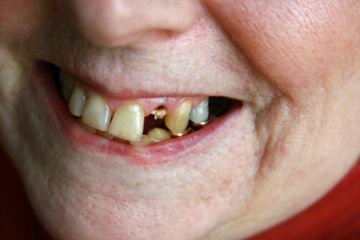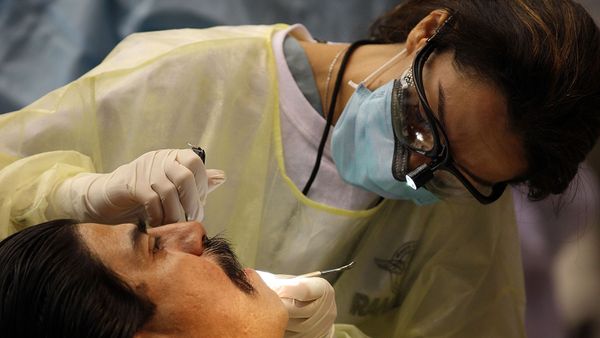One of the most dreaded medical procedures is having a tooth extracted. The thought of sitting in a dentist's chair under anesthesia scares some people more than the bloodiest horror film. But it's not nearly as horrific as it sounds. Tooth and tooth root extraction is a common surgery, one with few complications and minimal pain.
A tooth may have to be extracted due to various dental concerns. Periodontal disease, also known as advanced gingivitis, can cause a tooth to become separated from the gum and bone that holds the tooth within the socket [source: WebMD]. Once this happens, the tooth needs to be removed to prevent even more infection. Also, if you play a sport or sustain an injury to the mouth, one or more teeth can be knocked loose to the point that they need to be taken out avoid further complications.
Advertisement
There are also basic orthodontic reasons to have a tooth extracted. Baby teeth that crowd a mouth often mean adult teeth will also be crowded. And while some people seem to have enough room in their mouths for wisdom teeth to come through completely, dentists often extract them because they're difficult to reach with a toothbrush and floss, which increases the risk of tooth decay.
Other reasons why a person may have a tooth extracted include [source: Colgate]:
- A person who has a high risk of infection due to an organ transplant, receiving cancer drugs or is under immunosuppressive therapy. People with transplants or serious illnesses are highly susceptible to infection. Even if there's only a small chance a tooth may become a problem, it must be taken care of immediately.
- Children needing braces may need baby teeth removed to help their adult teeth come in straight. This is sometimes considered a cosmetic procedure, but it allows for braces to work more efficiently.
Both baby and adult teeth "erupt" (the formal name for teeth coming in the mouth) when they come all the way in through the gums. According to Dr. Jeremy Rosenberg, a dentist in Atlanta, Ga., teeth that need to be extracted fall into two categories -- fully impacted or partially impacted. Full impaction means the tooth is under the gum and completely covered by the jawbone. A partially impacted tooth means the tooth is partially covered by some bone and gum tissue. A tooth is always completely removed, roots and all. Dr. Rosenberg said that occasionally, a small fragment of root may break off and is left in the bone if it will cause trauma to the area to remove it. He explained that the body forms bone around it and heals normally. However, this doesn't happen often, and the root piece has to be very small to be left in the mouth.
Now you know why teeth are extracted. On the next page, learn how they're removed and by whom.
Advertisement



